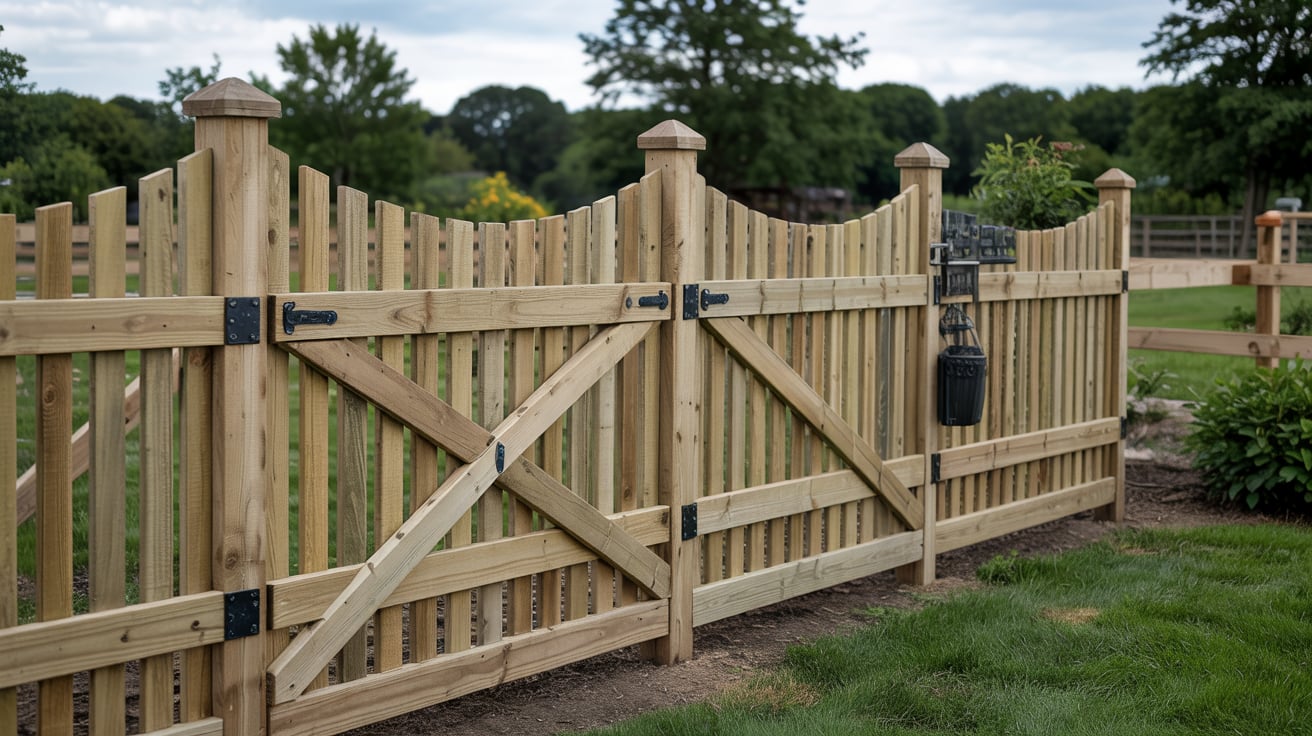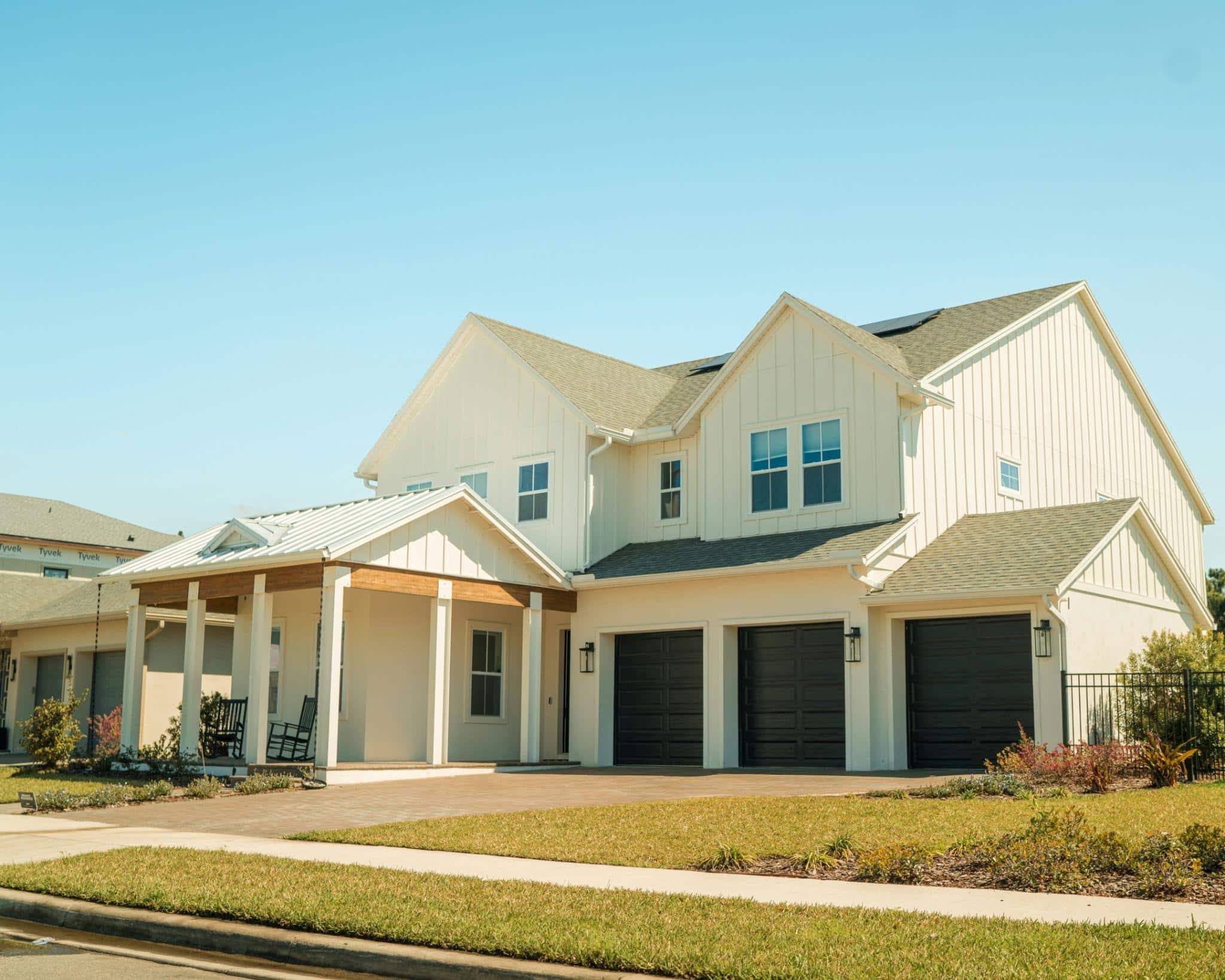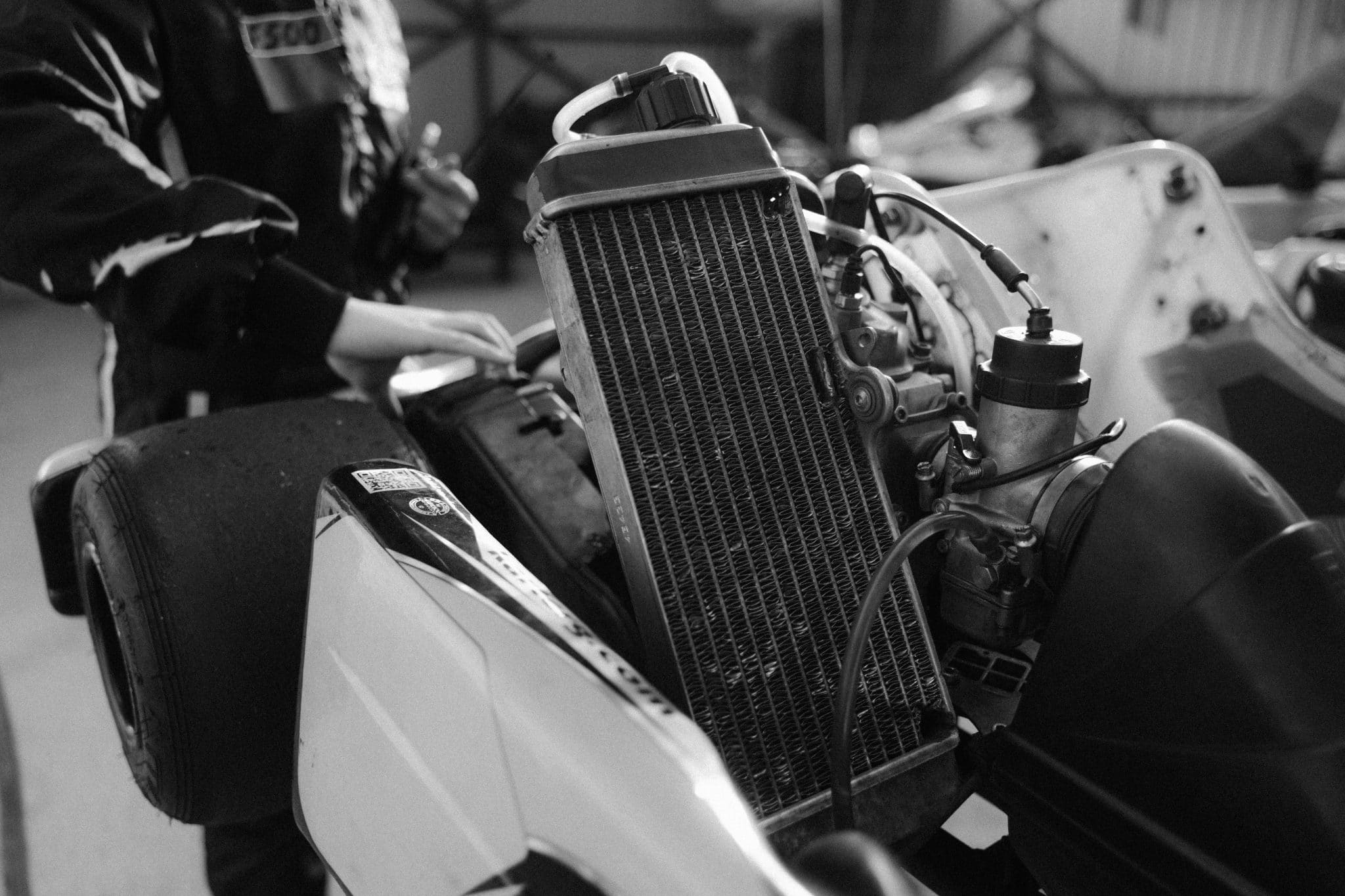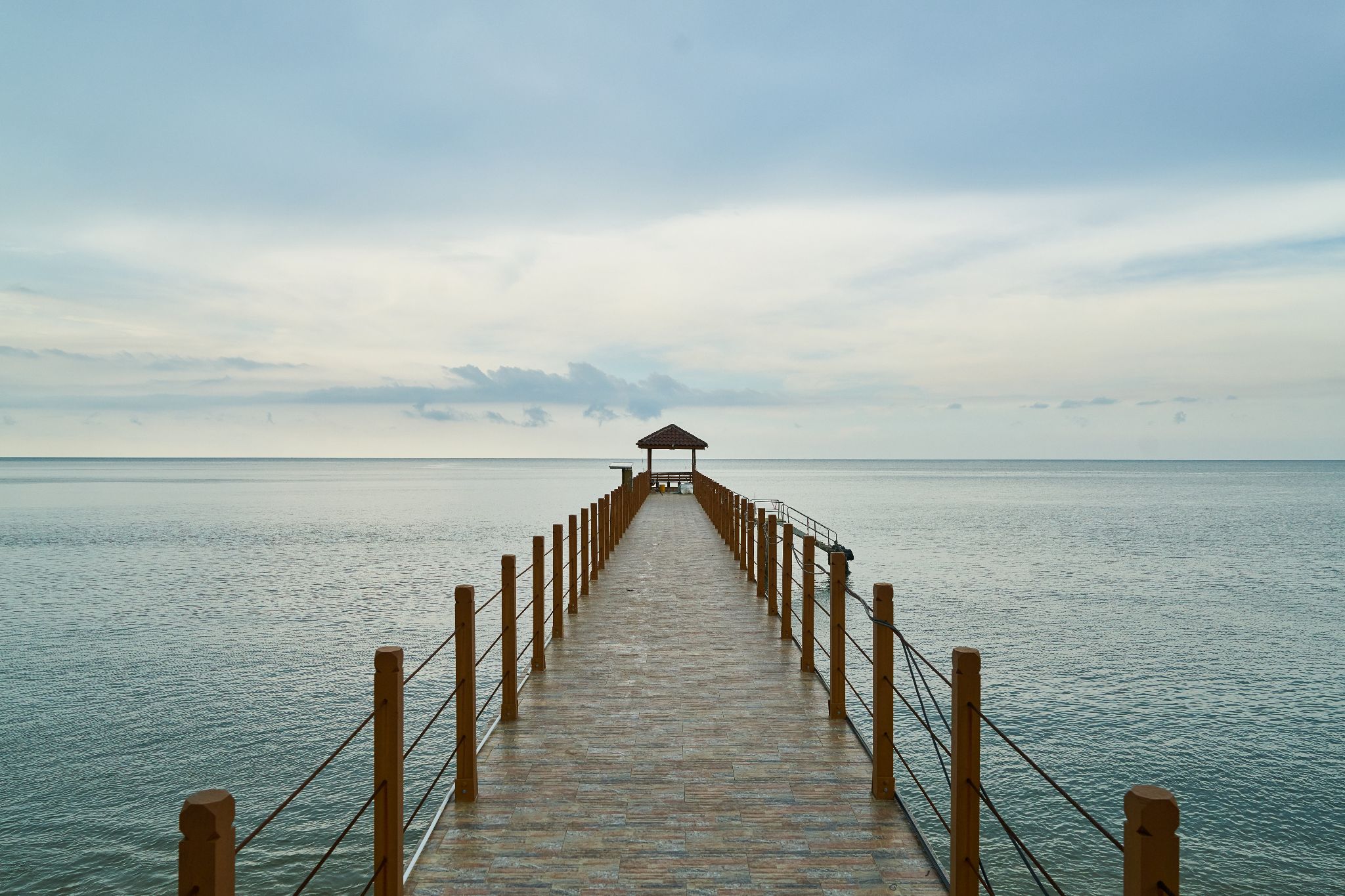Looking for a sturdy and stylish fence? I understand the challenge. Most homeowners struggle to find fencing that provides security without sacrificing curb appeal, leaving their property looking either fortress-like or flimsy.
I’ve spent years in the fencing industry and discovered that the perfect fence combines structural integrity with aesthetic design elements that complement your home.
In this guide, I’ll explain the essential components that create a fence with strength and style.
You’ll learn about quality materials that withstand the elements, design principles that enhance your property’s appearance, and structural components that ensure longevity, all without breaking the bank or compromising on either function or form.
Finding a fence that offers both security and aesthetic appeal can be challenging, but exploring various exterior design ideas can provide inspiration for creating a harmonious look. If you're updating an older fence or salvaging materials, using a wood stain remover can help strip away old coatings and prep surfaces for a fresh, clean look that better fits your new design.
What Are the Key Parts of a Fence?
Understanding fence components is like knowing the parts of a car you don’t need to be an expert, but basic knowledge helps you make better decisions and spot problems early.
A fence has several key parts working together
- Posts: The vertical supports that anchor your fence to the ground
- Rails: Horizontal pieces connecting posts and supporting panels
- Pickets/panels: The main visible barrier materials
- Gates: Moving sections that allow entry and exit
- Hardware: Hinges, latches, and fasteners holding everything together
- Footings: Underground concrete bases that keep posts stable
Knowing these parts helps you:
- Communicate clearly with contractors
- Identify what needs fixing when something breaks
- Make smart choices when selecting materials
- Handle basic maintenance yourself
- Understand quotes and avoid overpaying for repairs
Fence Posts: The Foundation That Holds Everything Up
Fence posts serve as the foundational support system of your entire fence, anchoring the structure into the ground while bearing the weight and lateral forces of rails, panels, and environmental stresses like wind and snow.
Properly installed posts determine the fence’s structural integrity, longevity, and ability to remain plumb and level throughout changing seasons and weather conditions.
Types of Posts
- Wood: Traditional option offering natural appearance and moderate durability, typically pressure-treated pine, cedar, or redwood
- Metal: Steel and aluminum posts provide a superior strength-to-weight ratio and resistance to warping
- Concrete: Maximum durability for heavy applications, though challenging to install and modify
Ideal Post Material for Different Climates and Soils
- Sandy soil: Metal posts with concrete footings provide better stability
- Clay soil: Wood posts with proper drainage, gravel work well, though heaving can be an issue
- Wet climates: Vinyl-sleeved wood or galvanized steel posts resist moisture damage
Rails: The Horizontal Support Structure
Rails are the horizontal framework components that connect and secure fence panels while providing structural integrity throughout the entire fence system.
They serve as the backbone of the fence, creating a unified structure by joining vertical posts and supporting pickets or panels.
Horizontal vs. Vertical Rails
- Horizontal rails run parallel to the ground between posts
- Vertical rails (sometimes called stiles) run perpendicular to the ground and often serve as the frame for fence panels
Material Options
- Wood: Traditional option with natural appearance, typically pressure-treated pine, cedar, or redwood
- Vinyl: Low-maintenance alternative that resists rot, insects, and weathering
- Steel: A highly durable option providing maximum strength and security
- Composite: Blend of wood fibers and plastic polymers offering durability with a wood-like appearance
Board: The Face of Your Fence
Fence panels and boards form the visible exterior surface of your fence, defining its appearance while providing privacy, security, and aesthetic appeal.
While individual boards are single pieces that are assembled on-site to create the fence face, panels are pre-assembled sections that can be installed as complete units between posts, offering convenience and consistency in appearance.
Types of Panels
- Picket: Features evenly spaced vertical boards with gaps between them, creating a classic, semi-private appearance
- Privacy: Solid panels with no gaps, designed to block visibility completely
- Lattice: Decorative open-weave pattern that provides partial visibility while maintaining an ornamental appearance
Panel Materials
- Wood: Traditional material offering natural beauty and customization options
- Vinyl: Maintenance-free alternative that resists weathering and requires no painting
- Metal: Durable option including aluminum, steel, and wrought iron for strength and security
Caps and Post Tops Protective Elements
Fence post caps serve a dual purpose by adding decorative flair while providing essential protection against moisture damage.
Caps prevent water infiltration that can lead to rot, rust, or internal degradation by covering the exposed end grain of wooden posts or the hollow openings of metal and vinyl posts.
Different Types of Post Caps
- Flat caps: Simple, low-profile designs that provide basic protection without drawing attention
- Pyramid caps: Classic four-sided peaked design that sheds water efficiently
- Decorative caps: Ornamental options, including solar lights, finials, and sculpted designs that create visual interest
Materials Used for Caps
- Metal: Copper, aluminum, and steel options offering durability with patina potential
- Wood: Matching or contrasting wooden caps that continue the natural aesthetic
- Vinyl: Maintenance-free options that coordinate with vinyl fencing systems
Gates: The Entry Points of Your Fence
Gates provide essential access points to your property while maintaining the security and aesthetic integrity of your fence system.
As functional architectural elements, gates serve as controlled entry and exit points that, when closed, complete the protective barrier of your fence.
Types of Gates
- Single gates: Standard design for pedestrian access, typically 3-4 feet wide
- Double gates: Paired gates that swing open from the center, ideal for wider access of 6-12 feet
- Sliding gates: Space-efficient horizontal-moving gates perfect for areas without swing clearance
- Swinging gates: Traditional design that pivots on hinges, available in inward or outward opening options
Materials Matching Gate to Fence Style
- Wood gates with decorative hardware for traditional wood fences
- Vinyl or aluminum gates for low-maintenance fence systems
- Ornamental metal gates for decorative or security-focused installations
Fence Hardware: The Unsung Heroes of Your Fence
Fence hardware components function as the crucial connectors that bind the entire fence system together, ensuring structural integrity and longevity of your installation.
From fasteners that secure boards to rails, to specialized brackets that reinforce post connections, to hinges and latches that enable gate operation, these often overlooked elements play an essential role in the fence’s stability.
Hardware Types
- Screws: Provide superior holding power and resistance to pulling out compared to nails.
- Nails: Ring-shank and spiral varieties offer enhanced grip for specific applications.
- Brackets: Post-to-rail connectors, corner braces, and fence panel clips for structural support.
- Hinges: Self-closing, strap, and T-hinges that support gate weight and enable smooth operation.
Importance of Rust-Resistant Materials
- Hot-dipped galvanized or stainless steel hardware resists corrosion in outdoor environments.
- Ceramic-coated or powder-coated options offer additional protection and aesthetic coordination.
- Marine-grade hardware for coastal environments exposed to salt air and high humidity.
Fence Material Cost Comparison and Key Considerations
Below is a table comparing popular fence materials, including their cost range, lifespan, maintenance requirements, and weather resistance. This can help readers decide based on their budget and needs.
| Fence Material | Cost per Linear Foot | Lifespan (Years) | Maintenance Level | Weather Resistance | Best For |
|---|---|---|---|---|---|
| Wood (Pine) | $10 – $25 | 10-15 | High | Low (prone to rot) | Traditional, rustic look |
| Vinyl | $20 – $35 | 20-30 | Low | High | Low-maintenance, modern |
| Chain Link | $5 – $15 | 15-20 | Low | Moderate | Security, pet enclosures |
| Aluminum | $15 – $30 | 20-25 | Low | High | Durable, decorative |
| Composite | $25 – $45 | 25-40 | Low | High | Privacy, long-lasting |
Common Mistakes to Avoid When Installing a Fence
-
Always verify your property boundaries with a survey before installation to avoid costly disputes with neighbors.
-
Failure to check zoning laws, HOA rules, and permit requirements can result in fines or forced removal.
-
Setting posts too shallow or using insufficient concrete leads to leaning, sagging fences that fail prematurely.
-
Placing posts too far apart weakens the entire fence structure and can cause sections to bow or collapse.
-
Installing panels on uneven terrain without proper stepping or racking techniques creates awkward gaps and an unprofessional appearance.
-
Choosing incorrect hardware or non-weather-resistant fasteners will cause premature rust, staining, and structural failure.
Conclusion
A well-built fence combines carefully selected components working in harmony. By choosing appropriate posts for your soil conditions, properly spaced rails, suitable panels for your privacy needs, protective caps, functional gates, and quality hardware, you create a structure that stands the test of time.
Remember that investing in proper materials upfront, particularly rust-resistant hardware and pressure-treated wood, prevents costly repairs later.
Take time to understand local regulations, measure accurately, and adapt your design to your landscape’s unique features, whether prioritizing security, aesthetics, or both.
Thoughtful planning of each component delivers a fence that enhances your property for years to come. The difference between an average fence and an exceptional one lies in these deliberate choices.
For more insights on enhancing your property's value and appearance, consider these home improvement tips.
Frequently Asked Questions
What Are the Rungs of A Fence Called?
The horizontal supports that connect fence posts are called rails. These structural components run between posts and provide support for fence panels.
What are Stringers on a Fence?
Stringers are horizontal support beams that run between fence posts. They’re also called rails and provide the framework that fence boards.
What is a Fence Plinth?
A fence plinth is a horizontal board installed at the bottom of a fence panel, touching the ground.














